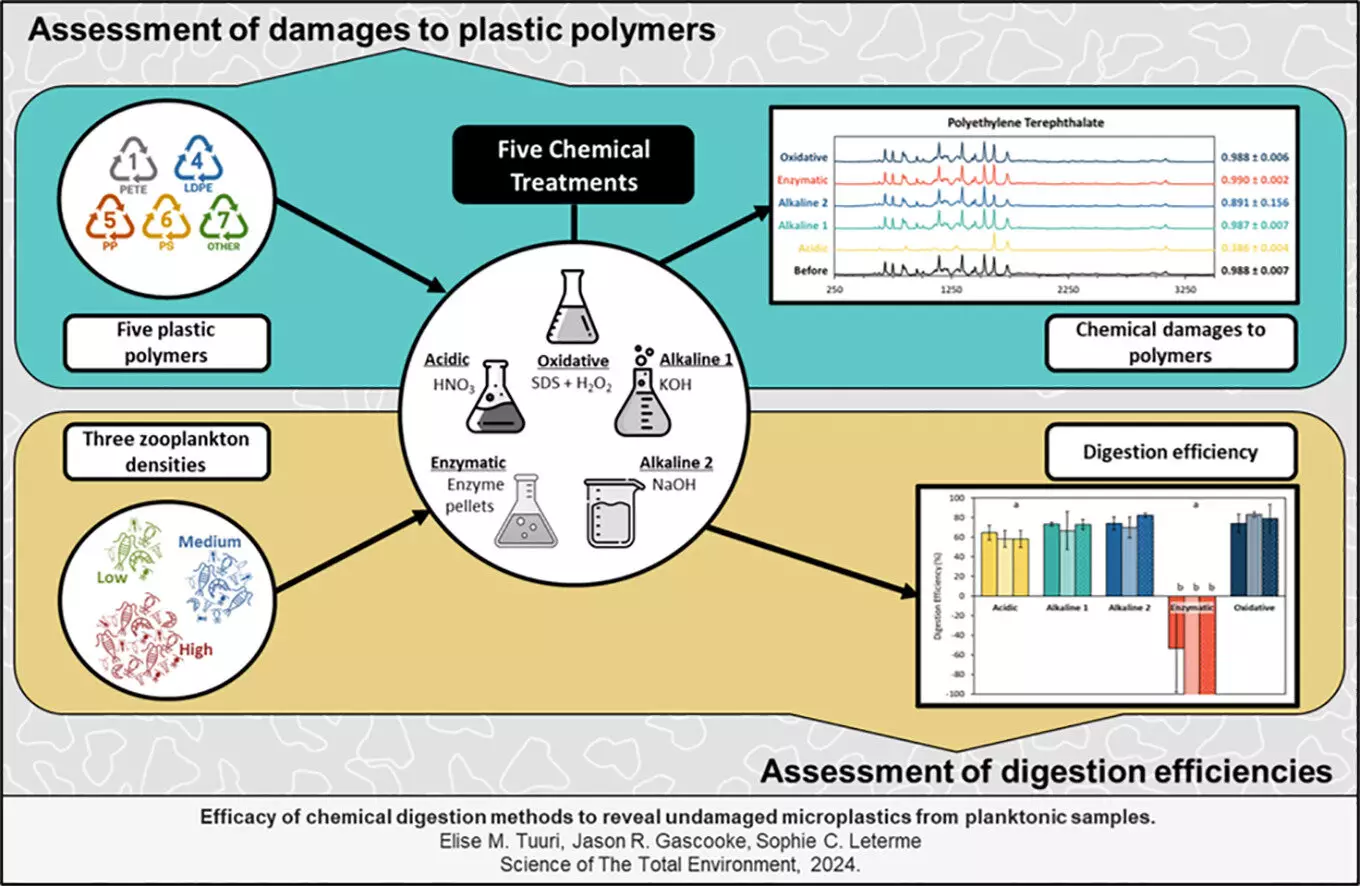The prevalence of plastic pollution in marine environments has become an alarming global issue. With an increasing volume of plastic waste entering oceans and waterways each year, researchers are urgently seeking solutions to this pervasive problem. Microplastics—tiny plastic particles less than 5mm—have infiltrated various marine ecosystems, presenting an imminent threat not just to marine life but also to human health. With the production of plastic skyrocketing from 2 million metric tons in 1950 to an expected 380 million metric tons by 2050, comprehensive research on microplastic contamination is critical for effective environmental management and pollution mitigation.
A recent study led by experts from Flinders University sheds light on the complex interactions between microplastics and zooplankton, a key component of marine food webs. The researchers employed controlled laboratory conditions to evaluate the effects of five chemical digestive aids on various commonly encountered plastics, including polyamide and polyethylene terephthalate. By manipulating the chemical environment—through acidic, alkaline, enzymatic, and oxidative treatments—the study aimed to assess how these factors influence microplastic breakdown and potential toxicity.
Ph.D. candidate Elise Tuuri emphasized the far-reaching implications of microplastics on marine biota, noting that these pollutants have been detected in diverse environments, from deep-sea sediments to the digestive systems of fish and shellfish. Such findings are alarming, especially given the implications for human consumption of contaminated seafood.
Microplastics pose significant risks to marine ecosystems by disrupting the health and survival of different species. As Tuuri highlights, the association of microplastics with zooplankton can provide crucial insights into their role in the broader marine food web. The digestibility and accumulation of these particles can have cascading effects on marine biodiversity, impacting larger predators that rely on zooplankton as a primary food source. By understanding these interactions, scientists can begin formulating strategies to reduce the ecological footprint of plastics in marine environments.
The findings reported by Flinders University present a clear call to action for both researchers and policymakers. As Professor Sophie Leterme indicates, developing reliable methods for quantifying microplastic presence in marine ecosystems is vital. These methods can enable more robust data collection on microplastic toxicity and abundance, facilitating better informed strategies to tackle marine pollution.
Going forward, the intersection of scientific research and policy action will be critical in addressing the microplastic crisis. Collaboration between governmental bodies, environmental organizations, and academic institutions can pave the way for innovative solutions aimed at safeguarding marine ecosystems for future generations. Only through increased knowledge and proactive measures can we hope to stem the tide of plastic waste threatening our oceans and the myriad forms of life that depend on them.

